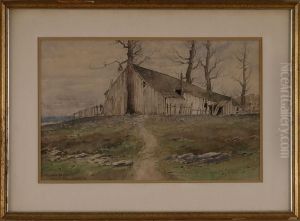Delancey Walker Gill Paintings
Delancey Walker Gill, often known as De Lancey Gill, was an American portrait artist born on November 23, 1859, in Columbia, South Carolina. He was particularly noted for his work as a staff artist for the Smithsonian Institution's Bureau of American Ethnology (BAE) in the late 19th and early 20th centuries. His role at the BAE involved creating illustrations and portraits of Native American peoples, contributing to the documentation and anthropological study of their cultures during a time of significant change and upheaval.
Gill was trained at the Maryland Institute of Art and developed his skills in photography as well. This combination of talents made him particularly adept at capturing the likeness and character of his subjects. In the 1880s, he moved to Washington, D.C., where he began his long association with the Smithsonian Institution. He was hired by the BAE in 1898, where he worked under the direction of prominent figures like John Wesley Powell and William Henry Holmes. His portraits are significant historical records of Native American life and culture, offering a visual complement to the ethnographic data being collected by the Bureau.
Throughout his career, Gill was dedicated to the accurate and dignified portrayal of his subjects. He was known for his ability to gain the trust of the Native Americans he worked with, which allowed him to produce portraits that were both intimate and revealing. His work provides an important resource for understanding the rich diversity of Native American societies at a time when many of their traditional ways of life were under threat.
Delancey Walker Gill's contributions to the field of ethnology and his sensitive approach to portraiture have left a lasting legacy. His portraits are preserved in the collections of the National Anthropological Archives and other institutions, where they continue to be studied and appreciated for their artistic and cultural value. Gill passed away on May 28, 1940, in Washington, D.C., leaving behind a body of work that remains a testament to his skill as an artist and his respect for the subjects he so carefully depicted.


